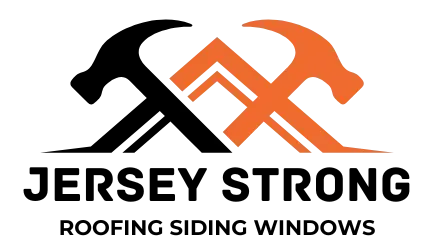Commercial Roofing Safety Tips: Essential Guidelines for Workers and Employers.
When it comes to commercial roofing, prioritizing safety is essential for both workers and building integrity. Understanding and adhering to OSHA regulations and local building codes can significantly reduce the risk of accidents on the job site. Implementing effective safety measures not only protects your team but also ensures compliance with legal standards, which can save you from costly fines and liabilities.
As a trusted roofing company in New Jersey, Jersey Strong Roofing emphasizes the importance of a comprehensive safety plan. This includes proper equipment, ongoing training, and regular inspections. By addressing potential hazards before they become serious issues, you can maintain a safer work environment while extending the lifespan of your roofing system.
Taking the time to educate yourself and your team about roofing safety tips can make a significant difference in both performance and peace of mind. With Jersey Strong Roofing at your side, you can count on expert advice and professional service tailored to meet your specific commercial roofing needs.
Understanding Commercial Roofing Fundamentals
A solid grasp of commercial roofing requires understanding the types of roofs available and their materials, along with the significance of energy efficiency and proper drainage systems. These elements directly impact the durability, performance, and cost-effectiveness of your roofing solution.
Types of Commercial Roofs and Materials
When considering commercial roofing, flat roofs are the most common choice. They are ideal for most commercial buildings due to their simple design and efficient space utilization.
Key types of flat roofing materials include:
- EPDM (Ethylene Propylene Diene Monomer): A synthetic rubber known for durability and weather resistance.
- TPO (Thermoplastic Olefin): Lightweight and reflective, which promotes energy savings.
- PVC (Polyvinyl Chloride): Known for its resistance to chemicals and fire.
Each material has unique benefits and drawbacks. Choose a material based on climate, building structure, and your budget. Jersey Strong Roofing specializes in assessing these factors to ensure you select the best option for your needs.
Importance of Energy Efficiency and Proper Drainage
Energy efficiency is crucial in commercial roofing. Selecting reflective materials helps reduce heat absorption, lowering cooling costs during warmer months.
Proper drainage systems are equally important. Without adequate drainage, water can accumulate on flat roofs, leading to leaks and structural damage.
Key drainage components include:
- Gutters: Channel water away from the roof.
- Scuppers: Allow water to exit through openings in the walls.
- Internal Drains: Collect water and direct it to a plumbing system.
Maintaining these systems is vital to extending the roof's lifespan and reducing long-term costs. Jersey Strong Roofing provides maintenance services to keep your roofing in optimal condition while ensuring you stay compliant with safety standards.
Safety Regulations and Compliance
Ensuring compliance with safety regulations is crucial for maintaining a secure roofing environment. Following OSHA guidelines and building codes can significantly reduce workplace hazards and protect workers. Proper fall protection systems are essential in any commercial roofing project.
Adhering to OSHA and Building Code Requirements
OSHA regulations outline specific requirements that you must follow to ensure worker safety on roofing projects. Familiarizing yourself with these standards will help you mitigate risks associated with falls and other hazards. Key regulations include:
- General Duty Clause: Employers must provide a safe workplace.
- Fall Protection Standards: Guidelines for using personal fall arrest systems (PFAS).
Local building codes may also dictate specific practices or materials you must use. These codes ensure that the structure is safe for both workers and future occupants. For commercial projects, it’s essential to verify that your methods comply with these regulations to avoid fines or shutdowns.
Implementing Fall Protection Systems
Fall protection systems are vital for protecting workers on rooftops. You should establish a reliable safety plan that includes the use of appropriate fall protection equipment. This can range from guardrails to personal fall arrest systems. Important components include:
- Anchor Points: Secure locations to attach harnesses or lifelines.
- Safety Nets: Provide protection from falls in open areas.
- Training: Ensure all workers understand how to use safety equipment properly.
Using the right fall protection methods will help minimize the risk of injuries. Trust Jersey Strong Roofing to guide you through these compliance requirements, providing expert solutions tailored to your roofing needs. By focusing on safety and adherence to regulations, you can maintain a safe working environment while protecting your investment.
Maintenance and Inspections
Regular maintenance and thorough inspections are crucial for ensuring the longevity and safety of your commercial roof. These practices help you identify potential issues before they evolve into costly repairs.
Conducting Regular and Routine Inspections
Schedule routine inspections of your roof at least every six months. This frequency helps detect early signs of wear and tear. Ensure that inspection checks include the roof membrane, seams, flashings, and drainage systems.
During each inspection, look for common issues such as punctures, blisters, or cracks. Record your findings and take photos for reference. It's wise to hire professionals, like Jersey Strong Roofing, who offer a complete overview of your roof’s condition. Their expertise can significantly reduce future repair costs by addressing problems early.
Identifying and Addressing Roof Damage
Recognizing roof damage quickly is essential for maintaining safety and structure. Conduct thorough checks after severe weather events. Look for missing shingles, dents, or areas where water pools. These issues can lead to leaks or further deterioration.
When you find damage, categorize it based on severity to prioritize repairs. Minor issues may require simple patching, while significant damage could necessitate a professional evaluation. Address damage promptly to prevent escalation. Choosing Jersey Strong Roofing ensures you receive quality repairs, enhancing your roof’s durability. By staying proactive, you can protect your investment and maintain a safe commercial property.
Operational Safety Practices for Contractors
Maintaining safety during commercial roofing tasks is crucial. Attention to detail in equipment use, proper gear, and awareness of the weather can significantly mitigate risks associated with roofing work.
Utilizing Proper Roofing Tools and Equipment
Using the right roofing tools is essential for preventing injuries and ensuring quality work. Ensure your tools are well-maintained and appropriate for the specific task.
Common Roofing Tools:
- Nail Guns: Use for quick fastening but ensure you follow safety protocols.
- Saws: Electric and hand saws should be used with caution, ensuring proper guards are in place.
- Roofing Cones: Implement these to alert workers of hazards.
Inspect all equipment before use. Damaged tools like ladders or straps can lead to serious accidents. Regular maintenance can enhance their lifespan and reliability. Proper education on how to use these tools effectively is equally important. Mobile safety training can aid in this aspect.
Wearing Safety Gear and Using Ladders Correctly
Personal protective equipment (PPE) is your first line of defense. Always wear a hard hat to protect against falling debris. Other essential safety gear includes:
- Safety Harnesses: Crucial when working at high elevations.
- Non-slip Footwear: Provides better grip on steep pitches.
- Gloves: Protects your hands from cuts and abrasions.
Ladder safety is equally vital. Ensure that ladders are on stable ground and not at extreme angles. Always maintain three points of contact while climbing. Utilize extension ladders that are rated for the required height, and secure them properly before use.
Weather Conditions and Environmental Considerations
Roofing work should ideally occur in favorable weather conditions. High winds or rain can increase the risk of slips and falls.
Considerations for Weather:
- Wind Speeds: Monitor local forecasts and delay work if winds exceed safe limits.
- Rain: Wet surfaces are perilous; postpone tasks until dry.
- Temperature Extremes: Extreme heat can lead to heat exhaustion. Schedule regular breaks and stay hydrated.
Stay informed about changing weather conditions. Adjust your plans accordingly to avoid unnecessary risks. Robust weather preparedness can prevent injuries and ensure project timelines remain intact.
For dependable roofing services, consider Jersey Strong Roofing. Our expertise ensures that your commercial roofing needs are addressed effectively, safeguarding your investment and ensuring durability.
Preventing Common Roofing Hazards
Addressing common roofing hazards is essential for maintaining safety and structural integrity. Key areas of focus include managing standing water and implementing fire prevention measures while ensuring safe installation and repair practices.
Mitigating Risks of Standing Water and Fire Hazards
Standing water on roofs can lead to severe structural damage and accelerate the deterioration of the roof membrane. To prevent this, ensure your drainage systems are functioning correctly. Regular inspections will help identify clogs or blockages, ensuring proper water flow off the roof.
Create drainage plans that account for any potential pooling areas. If puddles persist, consider adding additional drains or modifying the roof slope.
Fire prevention is also critical. Maintain clear zones around heat sources and ensure flammable materials are kept away from the roofing area. Implementing appropriate fire barriers and routinely inspecting the roof can greatly reduce fire risks. Training your team on fire safety practices helps ensure everyone knows how to respond in emergencies.
Ensuring Safe Installation and Repairs
When hiring a commercial roofing contractor, prioritize those with a reputation for safety and quality. Jersey Strong Roofing is renowned for its skilled team, providing reliable services in New Jersey. Ensuring your contractor understands proper installation techniques is vital for roof longevity.
Before beginning any work, verify that all safety equipment is available and in good condition. This includes harnesses, helmets, and scaffolding.
During repairs, always identify potential hazards, such as unstable surfaces or weather conditions. Ensure your team is trained to recognize these risks. Consistent safety training and maintenance checks can prevent accidents and extend the lifespan of your roof, ultimately saving you money in costly repairs down the line.
Frequently Asked Questions
When working on commercial roofing projects, it’s essential to maintain a safe environment for all workers involved. Understanding key safety components, precautions, and regulations can significantly minimize risks.
What are the essential components of a roofing safety plan?
A roofing safety plan should clearly outline safety procedures, responsibilities, and hazard identification. It must include fall protection measures, personal protective equipment (PPE) requirements, and emergency response protocols. Regular training sessions ensure that all workers are aware of these components and understand how to implement them effectively.
What precautions should be taken to prevent falls during roof construction?
To prevent falls, install guardrails and safety nets around the roof perimeter. Workers should always wear harnesses when working at height. Conducting thorough inspections of ladders and scaffolding before use can also prevent accidents related to falls.
How does OSHA regulate safety for roofing projects on commercial buildings?
OSHA establishes standards that must be followed for roofing projects. These standards address fall protection, hazard communication, and training requirements. Compliance with these regulations ensures safer working conditions and minimizes the risk of penalties.
What are the major risk factors for workers engaged in commercial roofing?
Key risk factors include falls from heights, exposure to hazardous materials, and weather-related dangers. Lack of training and insufficient safety gear also contribute to workplace incidents. Recognizing these risks helps in formulating effective prevention strategies.
What can be included in a roof work safety checklist to ensure a secure worksite?
A safety checklist should include items such as PPE availability, weather conditions, equipment checks, and proper ladder placement. Ensure that all workers are familiar with emergency procedures and that communication methods are established on-site.
How can roofing hazards be identified and controlled to protect workers?
Regular site inspections are crucial for identifying hazards. Conducting risk assessments allows you to pinpoint potential dangers, such as unstable surfaces or chemical exposure. Implementing control measures, such as proper training and safety equipment, directly addresses these hazards and enhances worker safety.





